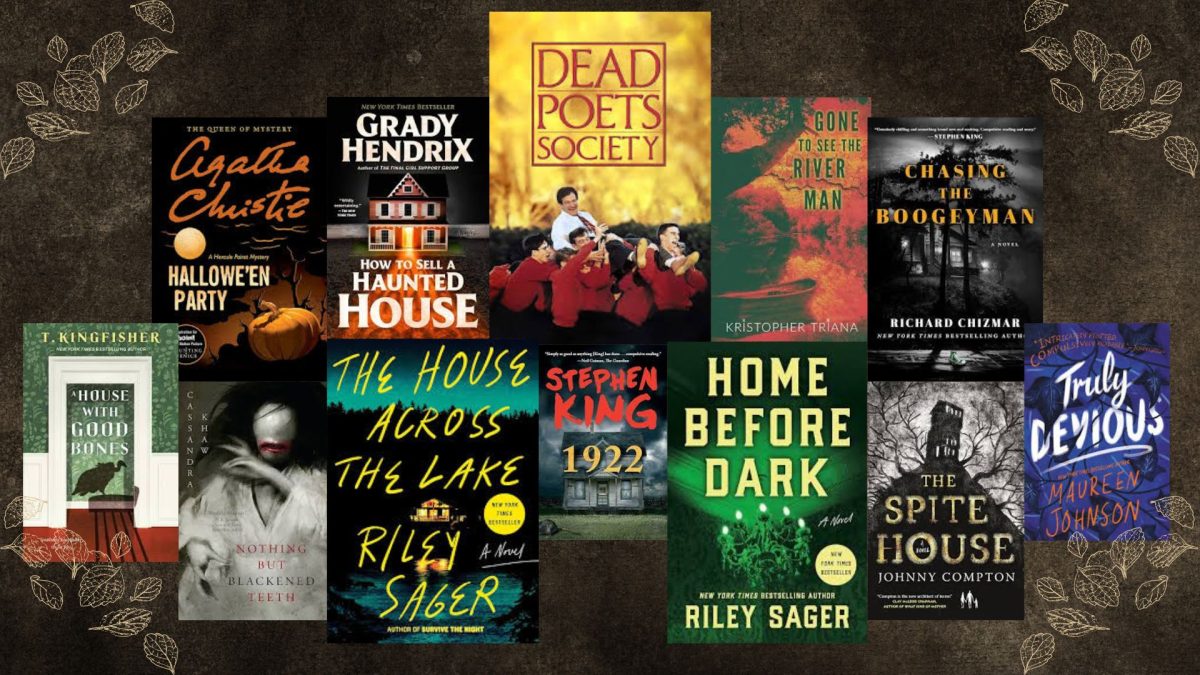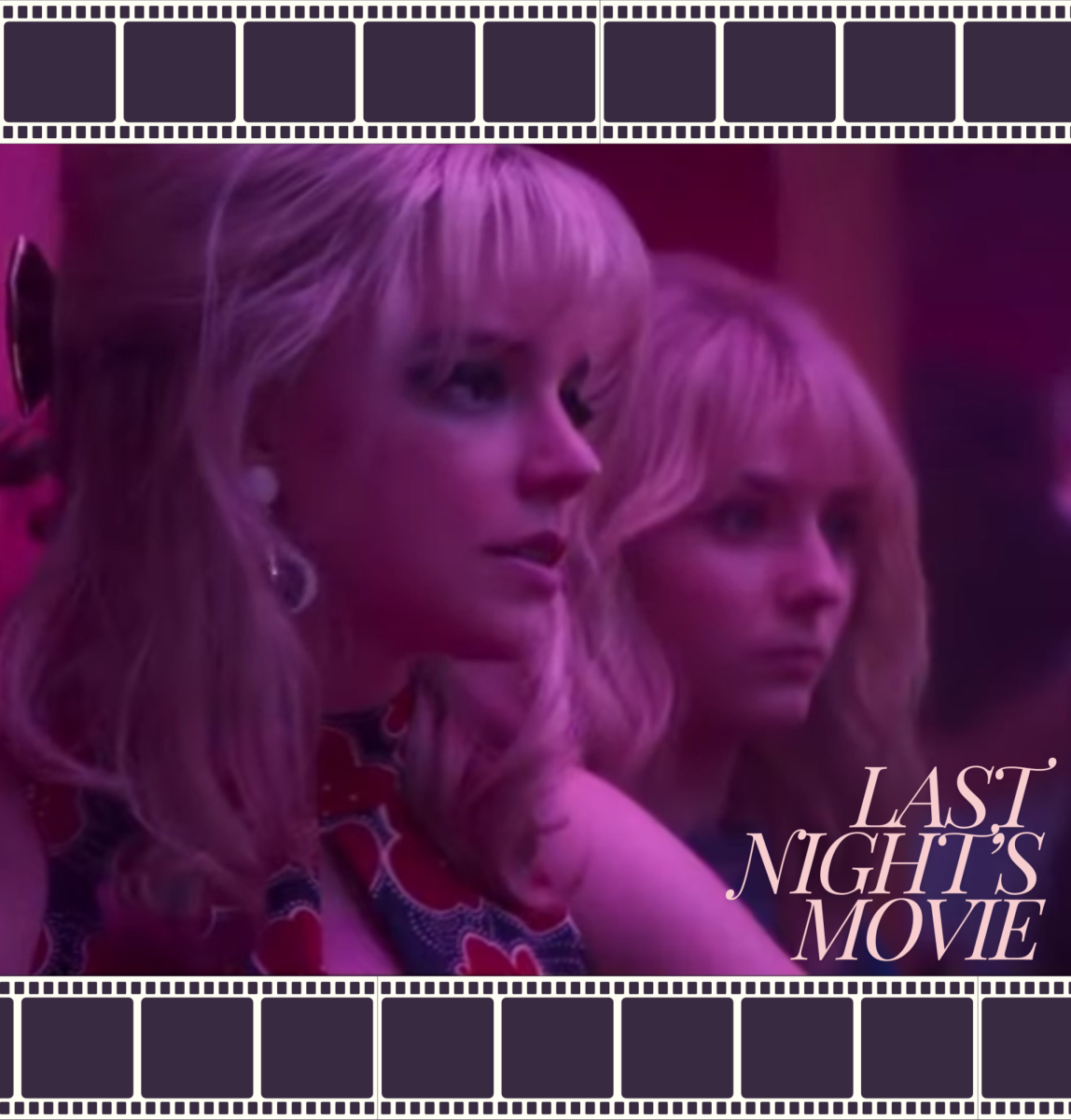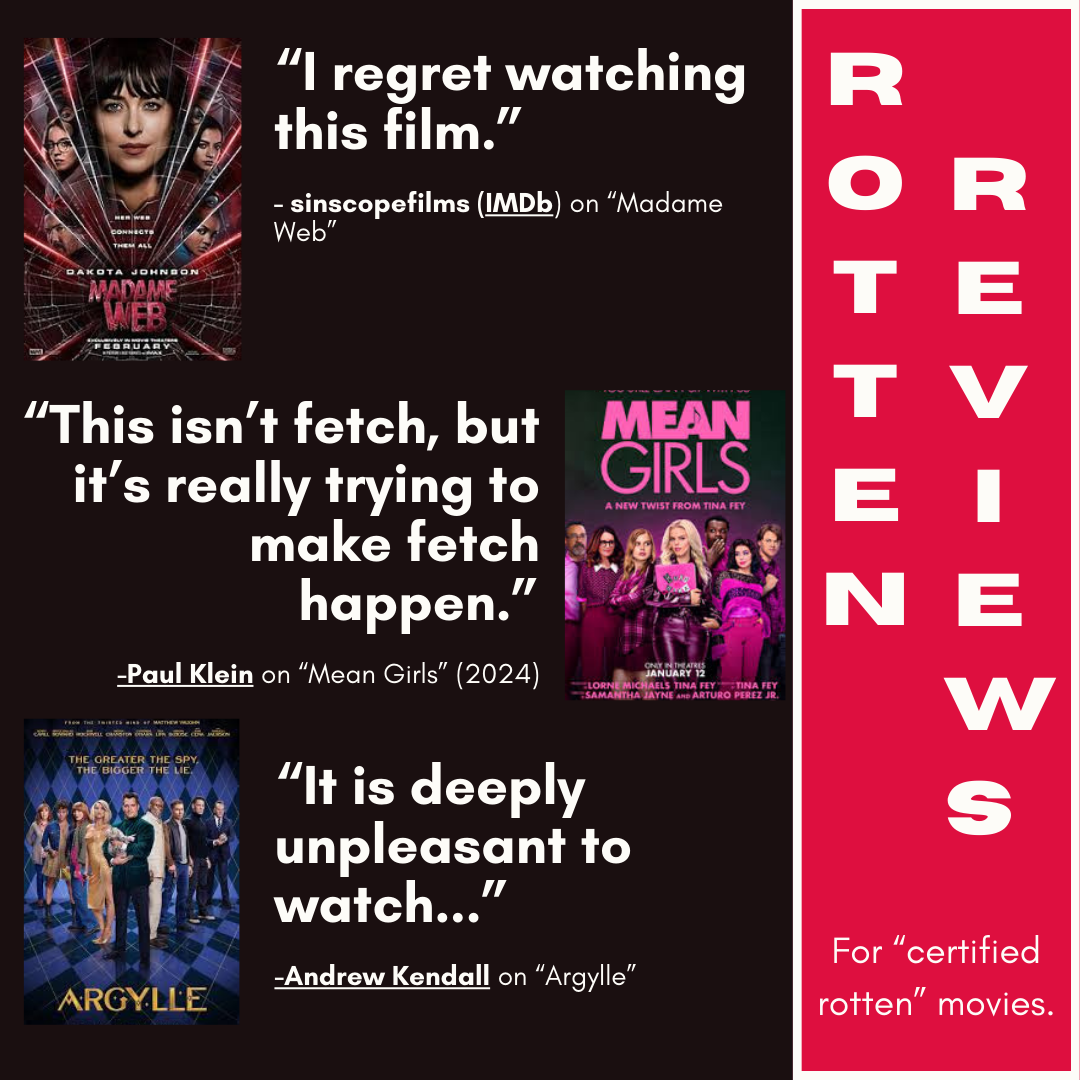The best of the worst: worst and best movies of 2023


“The Hunger Games” premiered on March 12, 2012, at the Nokia Theatre in Los Angeles. The film, based on the novel published on September 14, 2008, by Suzanne Collins, grossed about $694.4 million worldwide and was shortly curated into a book trilogy with its corresponding films dropping promptly after. The books and movies created an insane fanbase that was still lively even after the last movie was released in 2015.
However, on May 19, 2020, Suzanne Collins released a new novel, “The Hunger Games: The Ballad of Songbirds & Snakes,” which predates the original trilogy. On November 17, 2023, the film adaptation was released, causing the franchise to spend time in its revival.
“The Hunger Games: The Ballad of Songbirds & Snakes” takes place during the 10th annual Hunger Games, and is focused on the viewpoint of young Coriolanus Snow as he mentors tribute Lucy Gray Baird from District 12. The story takes the audience through the harsher realities of the early games, and displays more personal aspects of Snow’s romantic life.
One of the things I really loved about the film was the costuming. The franchise itself had created vital symbolism throughout the wardrobes of each character, like Katniss’ dress that mimicked a mockingjay, or the absurd maximalism of the Capitol that represented the abuse of wealth. In “The Hunger Games: The Ballad of Songbirds & Snakes,” Collins described Lucy Gray’s dress as “rainbow and ruffled.” When the movie finally released, the first look at the dress during the reaping created such a satisfying tie into the original movies. When Lucy Gray was reaped from District 12, the entirety of the District was dressed head to toe in gray, with touches of a slate blue. The contrast between the crowd and Lucy Gray was a direct reflection of the chaos Katniss created when she would wear extravagant styles during her interviews at Capitol. The reputation of Lucy Gray was heavily influenced by her image, making the film metaphorically intriguing, considering that Katniss is now becoming a more visible reflection of Lucy Gray’s character.
Besides the fine notice of detail, the film itself did a fantastic job on walking the viewer through Coriolanus Snow’s descent into madness. In the original movies, Snow is 82 years old and the president of Panem. However, seeing Snow at 18 years old makes every opinion formulated about him seem like they could change—until he proves them right again. The inner monologue Snow had in the book was portrayed on screen in a way that the audience could actually see and Snow’s actor, Tom Blyth, contributed a lot to deeper understanding of the character himself.
What we learn about Snow right from the beginning of the film is that he doesn’t have any money. In fact, his family doesn’t even make enough to eat a proper meal. The main plot-point, Snow’s ulterior motive is to win the scholarship money so he can attend university. He is counting on Lucy Gray to win in order for him to elevate himself higher up the totem pole within the Capitol. Unfortunately, Snow finds himself forming a connection with Lucy Gray that could ruin his personal plans.
Not only is Snow afraid of intimate relationships, or in other words, falling in love, he also has a tendency to make the wrong decision every single time. From cheating in the games to sneakily finding a way to get his “best friend” hanged for treason, Snow will undoubtedly throw any sign of redemption out the window if it means he will benefit in personal gain. This is what makes his character so interesting in the original movies, and “The Hunger Games: The Ballad of Songbirds & Snakes” only intensified the arc of Snow. It was so interesting to see Snow, the most successful character in the trilogy, in the same position as most of the individuals who get thrown into the arena. This film did such an amazing job of portraying the pure evil and haunting downfall of Snow.
Moving on to Lucy Gray, this character, portrayed by Rachel Zegler, was the most exciting to see on screen because she was a direct parallel to Katniss. Lucy Gray was a performer in a group called a Covey, and she moved from District to District singing and performing for audiences. Her contrast to Snow, her disdain for the games—she was the start of the rebellion Katniss finished. It was perfectly executed on screen, and it resonated so well with the people who have been fans for such a long time. Her relationship to Snow was especially interesting when we got to see it from her point of view, as she was a possession Snow thought he owned because she was able to win the games and lift him higher. When Snow had his anti-redemption, Lucy Gray stood as the sole symbol of Snow’s ambition for the games to continue. The one line from the film that stood out to me the most was: “It’s the things we love most, that destroy us.” Snow would never be able to love again, because his love for Lucy Gray made him weak. It was the most satisfying and well-executed character analysis put on screen.
The one distinct thing about “The Hunger Games” franchise is the dystopia of the story in general—the absurd, barbaric nature of a society overrun by elitist scumbags. This film made the games itself seem so much more intense and harsh compared to the original movies because the technology was not created yet. The arena was small, the tributes had nowhere to hide and the deaths were slow and mostly brutal. The idea of “The Hunger Games” was well received in the older movies, and it was able to make the viewers uneasy even then. The new film took that uneasiness and took it to another level. The fear, anger, confusion—everything the tributes experienced while in the arena felt way more intimate and way harder to watch. It was able to clearly display the progression of the games throughout the years and the true morals of the Capitol.
The film was intricate, from flawless cinematography to a perfectly well-rounded and captivating soundtrack, it did not fall short of expectations. Everything down to the last detail made this movie so enjoyable and especially made audiences question what other spin-offs the franchise could attempt to do.
“The Hunger Games: The Ballad of Songbirds & Snakes” will go down as one of the best films 2023 had to offer.

When gifted an iconic and memorable film franchise, it’s incredibly important to handle it with care. After all, these are the movies future generations of viewers and creators will look back to for inspiration and comfort. They are legacies in the making, meant to be regarded with as much esteem as those before them.
Unfortunately, Hollywood has never been very good with sequels. And no franchise has been done dirtier than Indiana Jones.
The Indiana Jones movies are some of the most cherished, family-friendly action movies to date. Or, at least, they were, before Lucasfilm decided to make yet another sequel.
“Indiana Jones and the Dial of Destiny” wasn’t even supposed to exist, originally. The movie before it, “Indiana Jones and Kingdom of the Crystal Skull” was meant to be the finale, as it passed on Indiana’s legacy to his son Mutt. It got mixed reviews after hitting theaters in 2008, which may be why they decided to tack on another movie, or maybe they’ve just never heard the saying “Two wrongs don’t make a right”.
Either way, the newest Indiana Jones installment is a failure, plain and simple, and much more so than its predecessor. The storyline is barely a line at all, rather a jumble of scraps fed to the audience from different tables. And none of them are worth eating.
The film opens with a 22-minute-long prologue that makes the audience aware of the mysterious artifact, the “dial of destiny”, that the movie is all about. And that’s great and all, except that that’s all it does. Harrison Ford could’ve mentioned it in a single scene, and the audience would’ve been okay.
Following the prologue, we meet the spunky rebel girl with questionable motives we can only assume are going to force the retired and depressed Indiana Jones back into his old line of work (and then eventually take his place). In this movie specifically, her name is Helena, not that it matters because she has no defining characteristics throughout the film (except maybe being annoying). One minute, she’s the con artist with a tragic past, the next she’s the stray Indiana must help onto the right path, and after that who knows, she could be the popularized fem fatale or even Indiana’s best friend.
It’s great that the film industry is trying to introduce strong female characters–is what I would say if it were true. But they’re not. For that to happen, they’d have to quit forcing the half-baked “I’m an independent woman which means I accept no help ever and think I am always right, which inevitably leads to my becoming a damsel in distress”. This is usually followed by said girl getting help from the main (male) character until they can effectively take their place. And don’t try to tell me this isn’t a real thing, it happened with Harrison Ford alone twice. First with him as Han Solo helping Rey in the Star Wars franchise and now with Indiana Jones. You’d think they’d figure out by now that instead of just replacing an overworked and tired role with a woman, it’d be a better representation to just, oh I don’t know, actually use their brain cells to make a new character.
But don’t worry, there’s some sense of equality in this movie because the other characters are just as awful.
Harrison Ford looks like he’s being held at gunpoint for most of the scenes. Either that or he was replaced by a clone who’s never heard the name Indiana Jones. The main character who used to be fearless, cunning and remarkable is gullible, watered-down and just sad. It’s almost like he knows he’s being replaced before his replacement even comes on screen.
And I don’t even know what I can say about the side characters. There’s a little boy named Teddy who is supposed to be the comic relief, only I hope not because he somehow has even less charisma than Helena and has the comedic range of a horrible Netflix comedy special.
Meanwhile the villain has no other character trait besides “vaguely evil (?)”, and I can’t even be sure about that because the only crime I can remember him committing is having the haircut of a male tax collector whose only hobby is collecting buttons.
I might’ve been able to withstand the sheer stupidity of all of the characters if it wasn’t for everything else about the movie. Like I said, the plot? Nonexistent, don’t bother looking for it, it’s not there. The script? Thoroughly butchered and then somehow approved. The action? I don’t think people beating each other up has ever been so boring. The conventional car chase? I clearly remember thinking, “are they done yet?” (they were not). The setting? Literally doesn’t matter. Honestly, most of this movie’s aspects don’t matter.
And that’s what makes it such a shame. It’s not only ended the Indiana Jones franchise but also effectively ruined it. Those creators of the future will no longer look back to Indiana Jones for guidance, they’ll look back to it for what to avoid. They haven’t just disappointed current fans, they’ve also spit in the faces of past fans and made themselves a pariah for those of the future. “Indiana Jones and the Dial of Destiny” is nothing more than Lucasfilm making a mockery of their own characters and ideas, and a reminder of the fragility of legacy.









linda • Jan 8, 2024 at 9:11 pm
very informative.. good review